Daisetsuzan: Hokkaido's Rooftop Traverse for Japan's Earliest & Most Spectacular Autumn
6/28/2025
14views
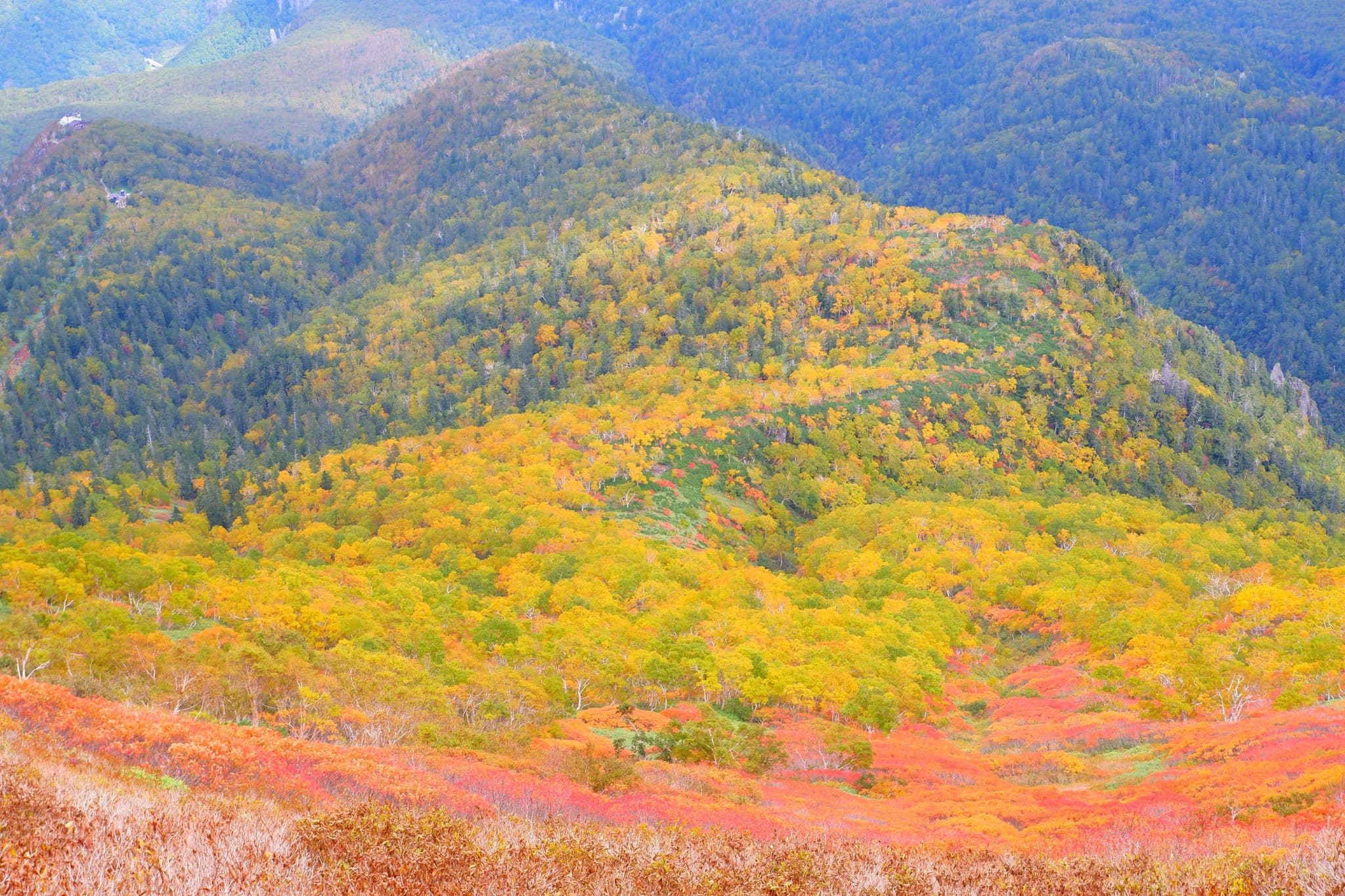
While Japan is renowned globally for its vibrant autumn foliage, there exists a place where you can experience the nation's earliest and most spectacular display of fall colors. This is the Daisetsuzan National Park, often called the "Roof of Hokkaido," a vast and majestic mountain range home to Hokkaido's highest peak, Mount Asahidake, and its counterpart, Mount Kurodake. The traverse route connecting these two iconic mountains offers an overwhelmingly beautiful journey through a landscape painted in breathtaking autumn hues.
Having personally embarked on this traverse, I can attest to the profound sense of awe it inspires. It's more than just a hike; it's an immersive experience that transports you to a "sky-high trekking paradise," where nature's grandeur unfolds with every step. Through this article, I aim to provide a comprehensive guide to the Asahidake-Kurodake traverse, highlighting its unique allure and explaining why a knowledgeable guide is indispensable for foreign visitors seeking to safely and deeply explore this magnificent wilderness.
Contents
- 01.|The Unparalleled Charm of Daisetsuzan: Japan's Earliest Autumn Leaves and Grand Nature
- 02.|Asahidake-Kurodake 2-Day Traverse Details: Itinerary and Highlights
- 03.|Why a Guide is Indispensable for Foreign Travelers: Safely and Deeply Experiencing the Roof of Hokkaido
- 04.|Tips and Precautions for Your Visit
- 05.|Conclusion
The Unparalleled Charm of Daisetsuzan: Japan's Earliest Autumn Leaves and Grand Nature
Japan's Earliest Autumn Leaves
Daisetsuzan is celebrated as the first place in Japan to welcome autumn, with the vibrant transformation of its landscape beginning remarkably early. Typically, the mountain range starts to show its colors in late August, with the peak foliage season extending from early to mid-September.This early onset of autumn paints the entire mountain in a magnificent tapestry of colors. The vivid reds of Nanakamado (rowan), the brilliant yellows of Dakekanba (birch), and the deep greens of Pinus pumila (dwarf stone pine) weave together to create a stunning brocade-like carpet across the slopes.
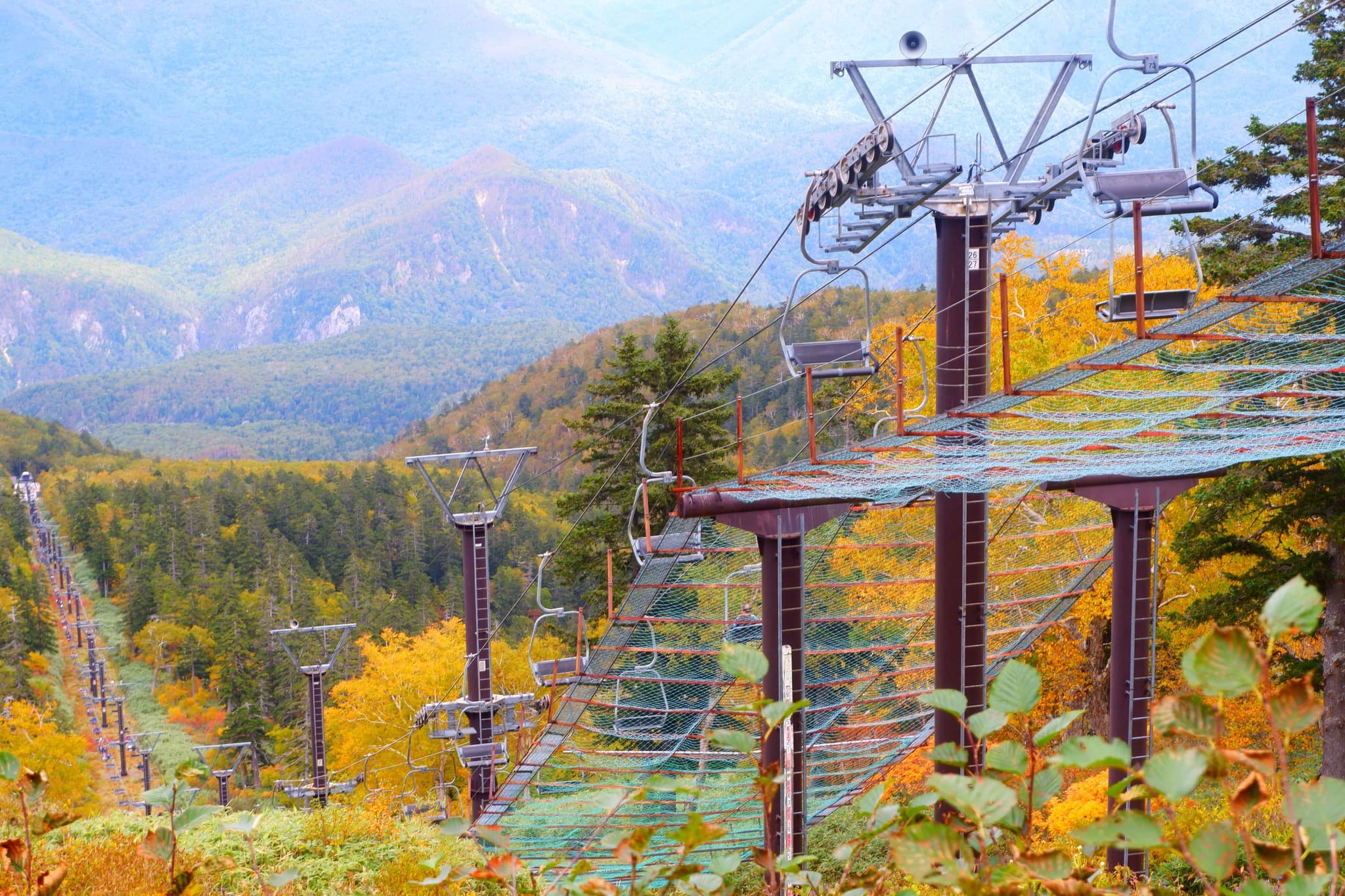
The Majestic Scenery of Hokkaido's Highest Peak, Asahidake
Mount Asahidake, standing at 2,291 meters, is not only Hokkaido's highest peak but also an active volcano, its raw, powerful beauty accentuated by plumes of volcanic gas.A significant advantage for hikers is the convenience of the Asahidake Ropeway, which provides easy access to higher altitudes, allowing more people to experience the mountain's grandeur.Around the ropeway's terminal station, the Sugatami Pond area offers a particularly mystical landscape, where the reflection of Asahidake on the pond's surface creates a breathtaking "inverted Asahidake" vista, especially captivating amidst the autumn colors.
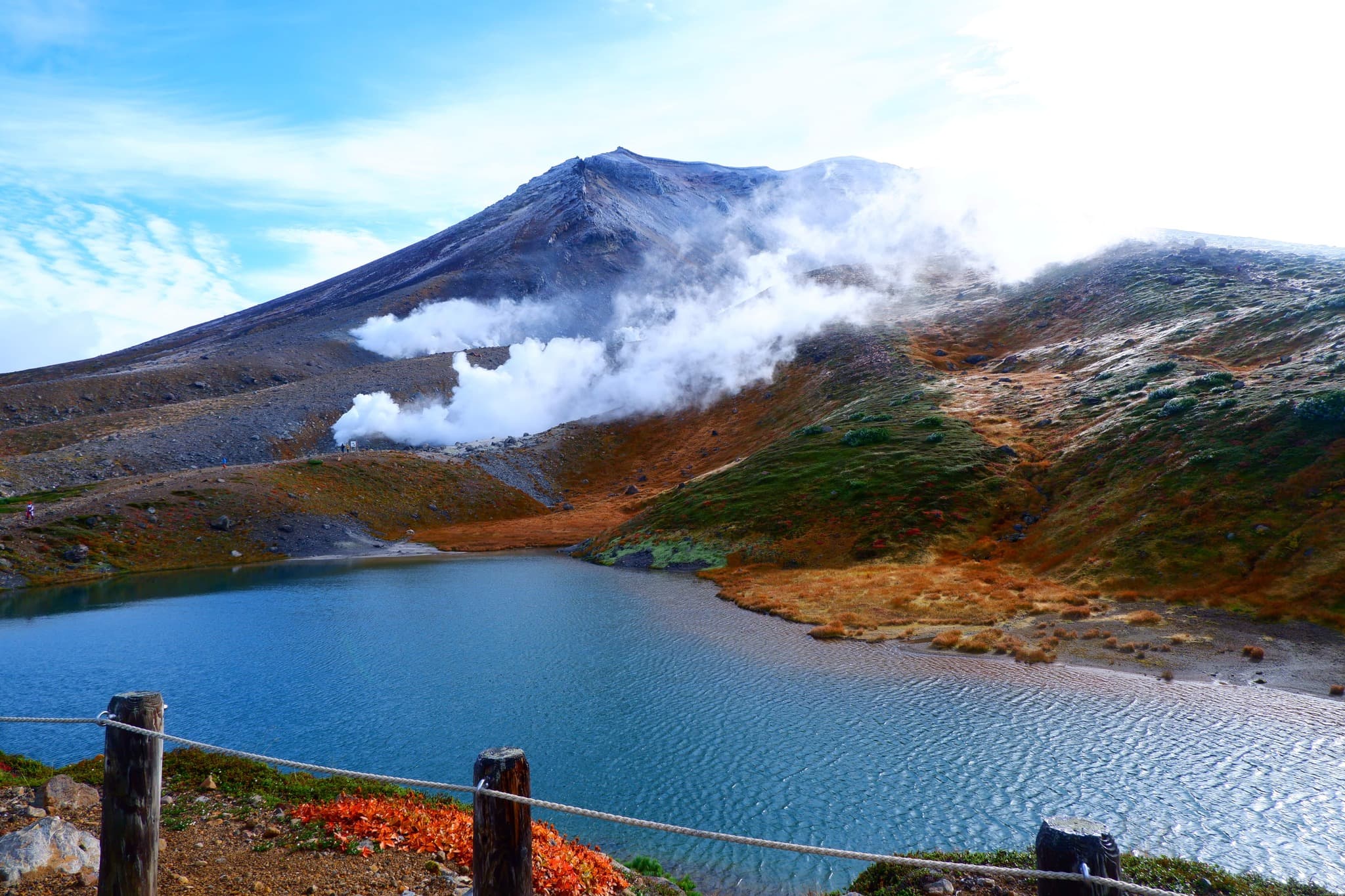
Kurodake's Panoramic Views and Surrounding Allure
On the eastern side of the traverse, Mount Kurodake offers equally stunning perspectives. Accessible via a ropeway and lift from Sounkyo Onsen, it provides a convenient entry point to the Daisetsuzan range.From the summit of Kurodake, hikers are treated to an expansive panorama of the entire Daisetsuzan mountain range. The Sounkyo Gorge itself is famous for its dramatic columnar jointing, adding another layer of geological wonder to the natural beauty.
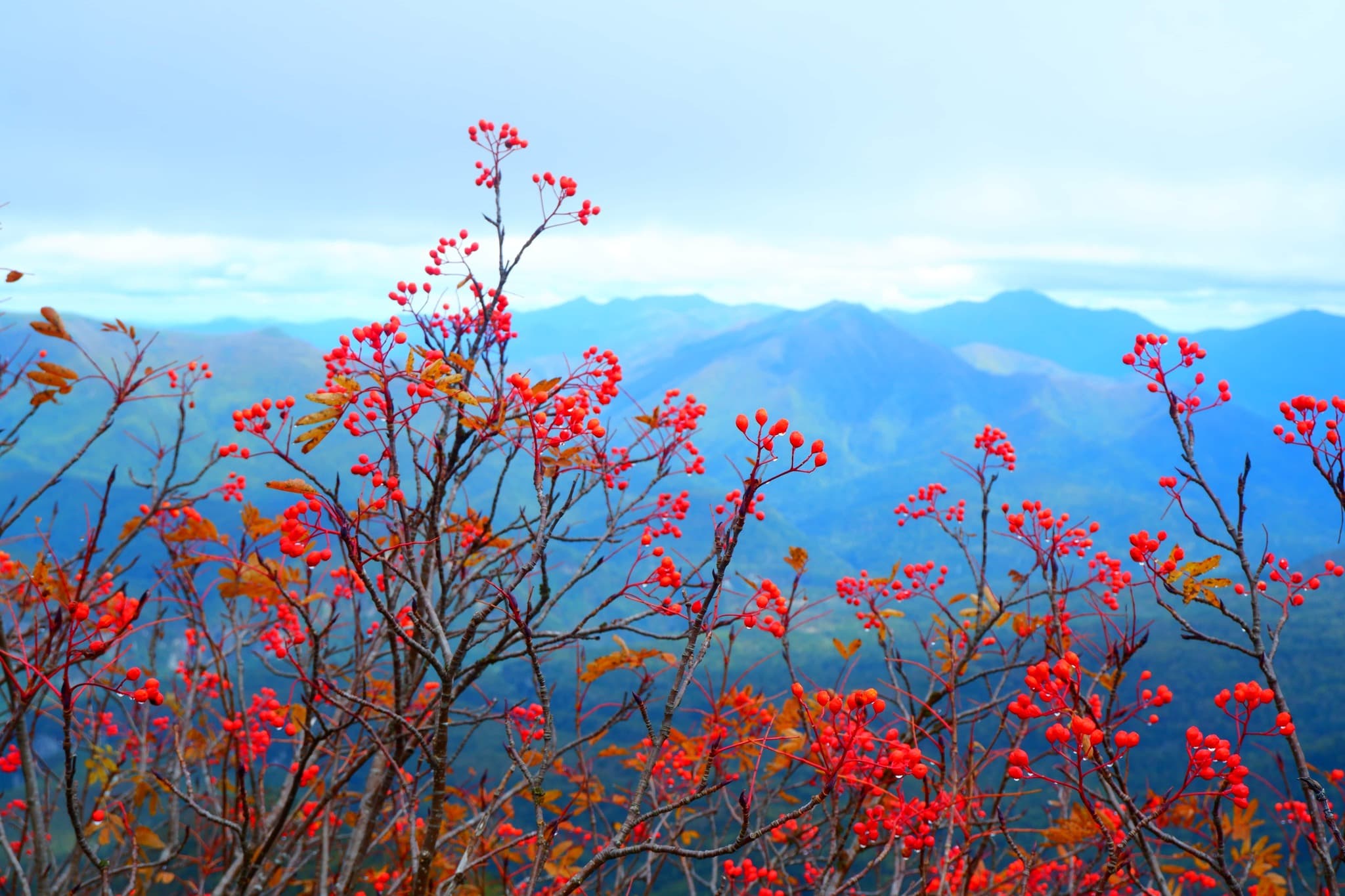
The Grandeur of the Vast Alpine Zone
Beyond the tree line, the traverse unfolds into an expansive alpine zone characterized by open ridge walking.This high-altitude environment reveals unique geological features such as vast cirque formations (karl topography) and scattered alpine flower fields, which, even outside the autumn season, add to the area's natural splendor.
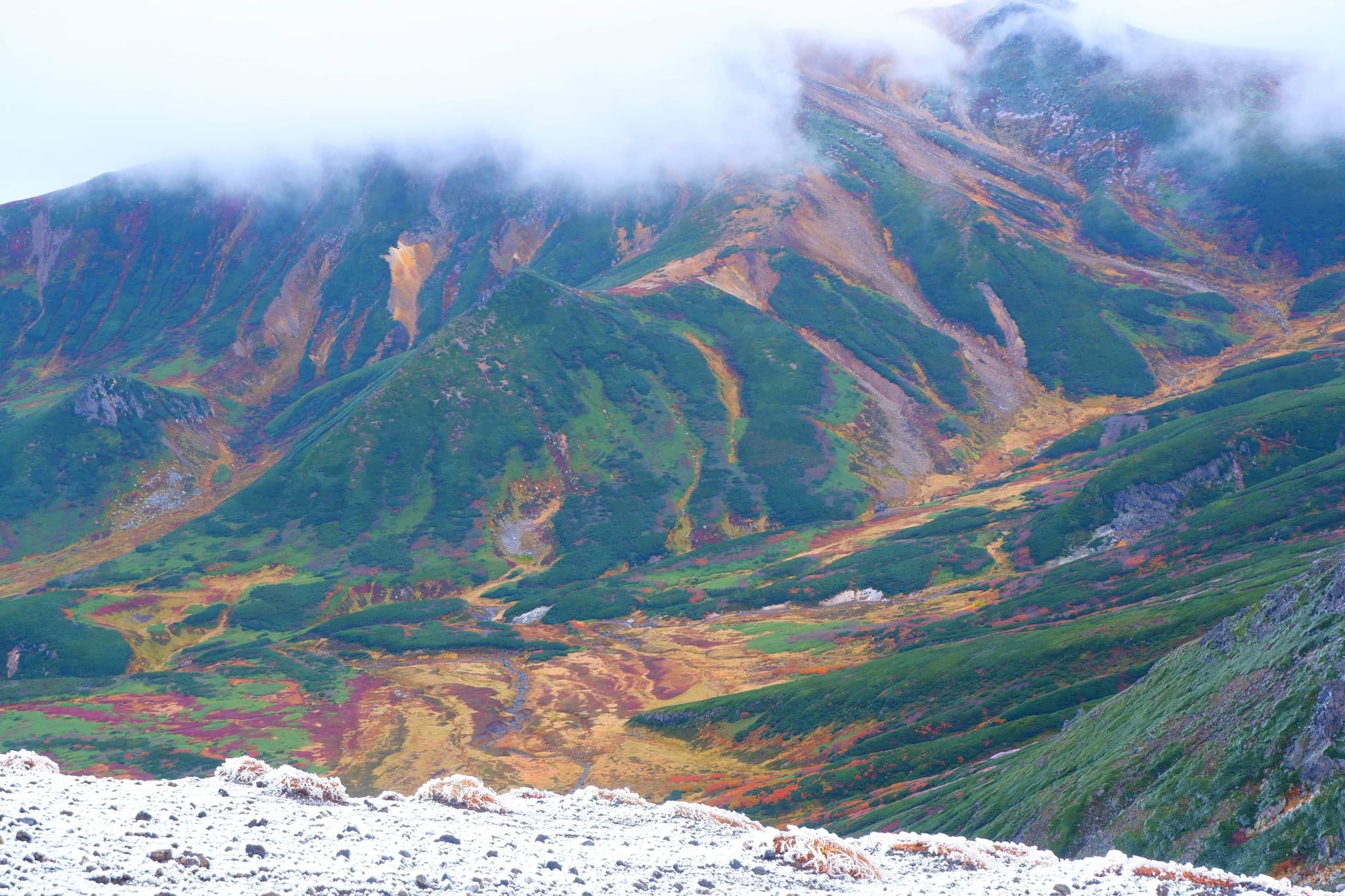
Abundant Nature and Wildlife
Daisetsuzan is a realm of untamed nature, home to diverse wildlife. It is a known habitat for brown bears, a crucial aspect that requires careful consideration for any visitor (detailed precautions will follow).Beyond bears, the observant hiker might also catch glimpses of other fascinating creatures like the Ezo squirrel and the elusive Pika, adding to the sense of wild adventure.
Asahidake-Kurodake 2-Day Traverse Details: Itinerary and Highlights
A typical 1-night, 2-day traverse from Asahidake to Kurodake offers a comprehensive experience of this magnificent mountain range.
Typical Route
Day 1: The journey typically begins at the Asahidake Ropeway Sugatami Station. From there, hikers ascend to Mount Asahidake, then continue along the ridge to Mamiya-dake and potentially Hokuchindake, before descending to Kurodake Ishimuro for an overnight stay.
Day 2: The second day involves trekking from Kurodake Ishimuro to Mount Kurodake summit, followed by a descent via the Kurodake Ropeway to Sounkyo Onsen.
Experiences at Key Points
Asahidake Summit (2,291m): Standing atop Hokkaido's highest peak, you are rewarded with a breathtaking 360-degree panorama of the surrounding mountains. The raw power of the active volcano, with its steaming fumaroles, is a truly humbling sight.
Sugatami Pond: Located near the Asahidake Ropeway's upper station, this picturesque pond perfectly mirrors Mount Asahidake, creating a stunning "inverted Asahidake" effect. The vibrant autumn colors surrounding the pond provide a striking contrast to the rugged mountain backdrop.
Mamiya-dake and Hokuchindake: The traverse along the ridges connecting these peaks offers a profound sense of openness and allows you to fully appreciate the vastness of the Daisetsuzan range. The expansive lava fields are a unique geological feature.
Kurodake Ishimuro: This mountain shelter, nestled deep within the mountains, provides a rustic yet essential overnight experience for trekkers. It offers a basic refuge and a chance to connect with fellow hikers.
Kurodake Summit (1,984m): Serving as a key observation point and the branching point for the descent towards Sounkyo, the Kurodake summit offers expansive views, particularly of the Sounkyo Gorge.
Sounkyo Onsen: After the challenging traverse, the natural hot springs of Sounkyo Onsen provide the perfect opportunity to soothe tired muscles and reflect on the incredible journey.
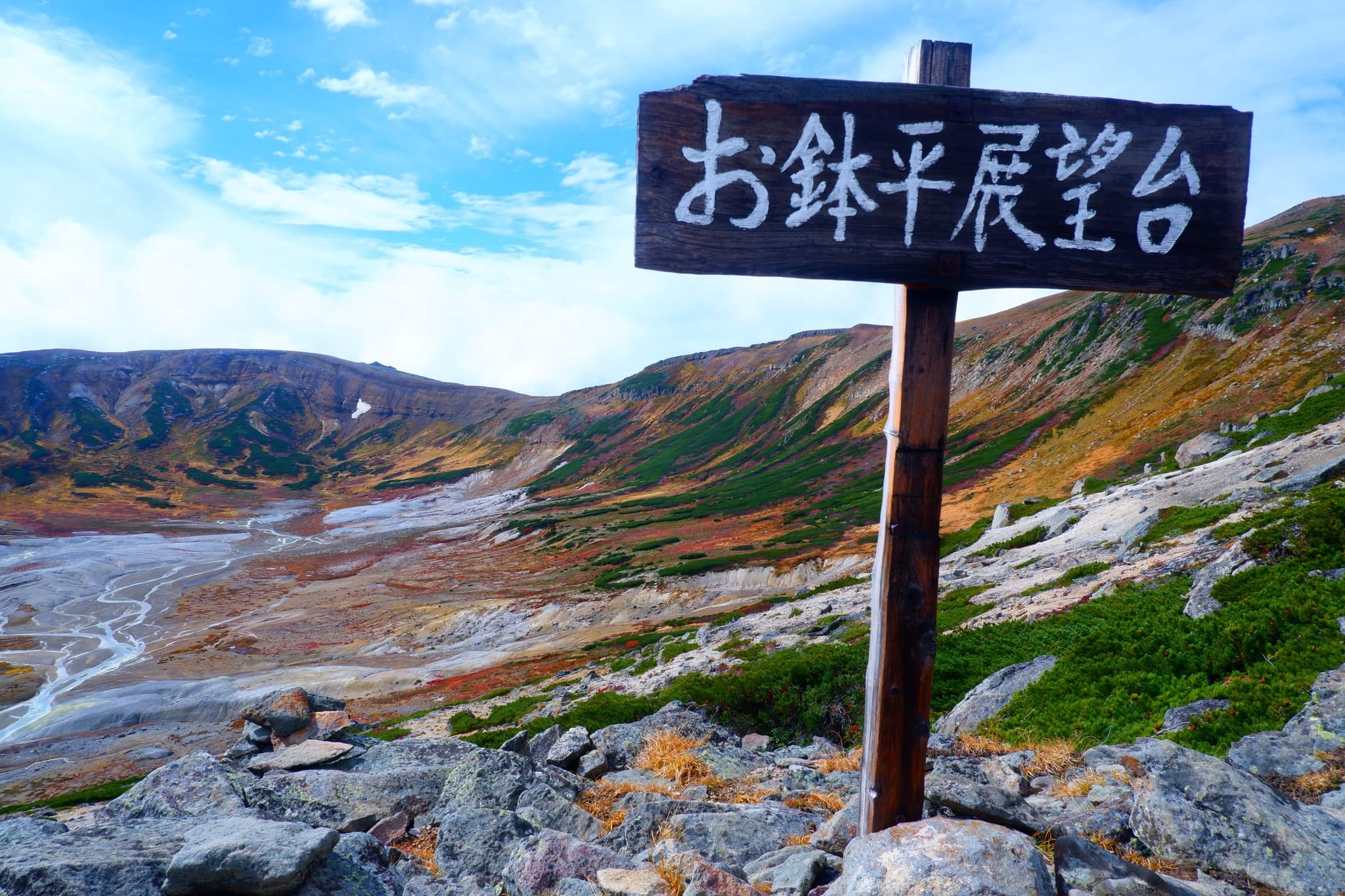
Physical and Mental Challenge and Achievement
Completing this 1-night, 2-day traverse is a significant physical and mental undertaking. The varied terrain, including potential snow patches and rocky sections, demands endurance and careful navigation. However, the immense satisfaction of traversing such a vast and wild natural landscape, witnessing its unparalleled beauty, culminates in a profound sense of achievement and connection with nature.
Why a Guide is Indispensable for Foreign Travelers: Safely and Deeply Experiencing the Roof of Hokkaido
While the allure of Daisetsuzan is undeniable, embarking on this traverse as a foreign traveler without a guide presents significant challenges and risks. The unique characteristics of this alpine environment necessitate expert knowledge and support.
Harsh Alpine Weather Conditions
Daisetsuzan is known for experiencing winter earlier than any other high-altitude region in Japan.Even during the summer and autumn, sudden and drastic weather changes are common, including strong winds, plummeting temperatures, heavy rain, and even unexpected snowfall.The perceived temperature can drop significantly, making appropriate and adaptable gear absolutely essential for survival and comfort.
Brown Bear Habitat
Daisetsuzan is an extensive habitat for brown bears.Therefore, comprehensive bear countermeasures are not just recommended but are an absolute must. This includes carrying bear bells and bear spray, as well as actively gathering the latest bear sighting information before and during your hike.Knowing how to react during an encounter, such as avoiding sudden movements, not running, and slowly backing away while maintaining eye contact (without staring), requires specific knowledge and experience that a professional guide possesses.
Complex Access and Logistics
A traverse hike, by nature, means starting and finishing at different locations, which complicates transportation arrangements. Coordinating buses or taxis between Asahidake Onsen and Sounkyo Onsen, especially with limited public transport options, can be a logistical nightmare for foreign visitors.Furthermore, understanding and adhering to the operating hours and last service times of the ropeways and lifts is critical to avoid being stranded.Securing mountain hut reservations, particularly during the peak autumn foliage season, is also essential and can be challenging without local knowledge.
Language and Information Barrier
Most trail signs, information boards, and communications at mountain huts are primarily in Japanese.This language barrier can make it incredibly difficult to navigate safely, understand real-time trail conditions, obtain crucial bear sighting updates, or interpret accurate weather forecasts.Moreover, understanding and respecting the nuances of Japanese climbing culture and rules, which prioritize safety and environmental preservation, is vital for a responsible and enjoyable experience.
The Value of Your Guide (Ryoto)
As your guide, I offer an invaluable service that transforms a potentially daunting challenge into a safe, enriching, and deeply personal adventure:
Safety Professional: With extensive experience in Daisetsuzan's unique weather conditions, I prioritize your safety above all else. My expertise in bear countermeasures, real-time trail condition assessment, and crisis management is crucial. Without an experienced guide, attempting this traverse is not recommended.
Perfect Logistics Arrangement: I handle all the complex logistics of a traverse, including arranging transportation between different start and end points (buses, taxis), securing mountain hut reservations, advising on and ensuring you have the necessary equipment, and implementing comprehensive bear countermeasures. All details are meticulously managed by me, Ryoto.
Deep Nature and Culture Commentary: Beyond simply navigating the landscape, I provide profound insights into Daisetsuzan's natural and cultural heritage. This includes explanations of its volcanic activity, the unique alpine flora, its deep connection to Ainu culture, and the ecology of brown bears – offering stories and learning opportunities not found in guidebooks.
Bilingual Communication: I ensure seamless communication throughout your journey, providing perfect bilingual support in English.
Van Life Expertise: My extensive experience and knowledge gained from living and traveling in Hokkaido's vast wilderness through my van life allow me to offer a unique perspective, enhancing this special traverse into a truly deep and personal experience.
Tips and Precautions for Your Visit
To ensure a safe and memorable Daisetsuzan traverse, keep the following tips and precautions in mind:
Best Season
The absolute best time to experience the spectacular autumn foliage is from early to mid-September.However, the alpine flower season, typically from July to August, is also a popular time for its vibrant blooms.
Required Equipment
Due to the unpredictable alpine environment, proper gear is non-negotiable:
Warm and Waterproof Rainwear: A full set (jacket and pants) is essential for protection against sudden rain, wind, and cold.
Insulation Layers: Fleece and down jackets are crucial for warmth.
Footwear: Sturdy, broken-in hiking boots are a must for varied terrain.
Accessories: Gloves and a warm hat are vital for protecting extremities from the cold.
Backpack: A comfortable backpack suitable for multi-day treks.
Headlamp: Essential, as days shorten significantly in September.
Essentials: Action food for energy, and sufficient water (at least 1.5L in summer, with warm drinks recommended).Consider a portable water purifier as mountain water sources may require boiling.
Bear Countermeasures: Bear bells and bear spray are absolutely mandatory.Ensure you know how to use the spray effectively.
Mountain Hut Reservations
Reservations for mountain huts are essential, especially during the peak autumn foliage season, as space is limited.Be aware that Daisetsuzan huts are primarily emergency shelters, often requiring you to bring your own sleeping bag and cooking gear.
Physical Fitness and Experience
This traverse is suitable for hikers of intermediate or higher fitness levels.Prior experience with overnight traverses is highly recommended. Be aware of the symptoms of altitude sickness and avoid overexertion.
Safety Measures
Weather Vigilance: Be prepared for sudden weather changes and always start your hike early to allow ample time for descent before dark.
Submit Climbing Plan: Submitting a climbing plan (登山届) to the nearest police station or online via the Hokkaido Prefectural Police website is mandatory.
Avoid Solo Hiking: Solo hiking in Daisetsuzan is extremely dangerous. Always hike with an experienced companion or, ideally, with a professional guide.
Bear Encounter Protocol: Be prepared to take appropriate action in case of a bear encounter, as detailed in the "Brown Bear Habitat" section.
Conclusion
The Daisetsuzan traverse, connecting Mount Asahidake and Mount Kurodake, is more than just a hike; it is the ultimate adventure to experience Japan's earliest and most spectacular autumn foliage. Walking through this vast alpine zone is truly an encounter with the very soul of Hokkaido.Are you ready to step onto Japan's earliest autumn carpet and witness breathtaking views from Hokkaido's highest peaks? In this untouched wilderness, where brown bears roam, you can challenge your limits and experience soul-stirring emotions.For foreign travelers, planning the Daisetsuzan Asahidake-Kurodake traverse can be complex and challenging. I, Ryoto, am here to ensure your adventure is safe, seamless, and truly unforgettable. I will meticulously plan a fully customized wild trekking experience tailored to your skills and desires, guiding you through every step of this magnificent Hokkaido adventure. Let's create unforgettable autumn memories together!